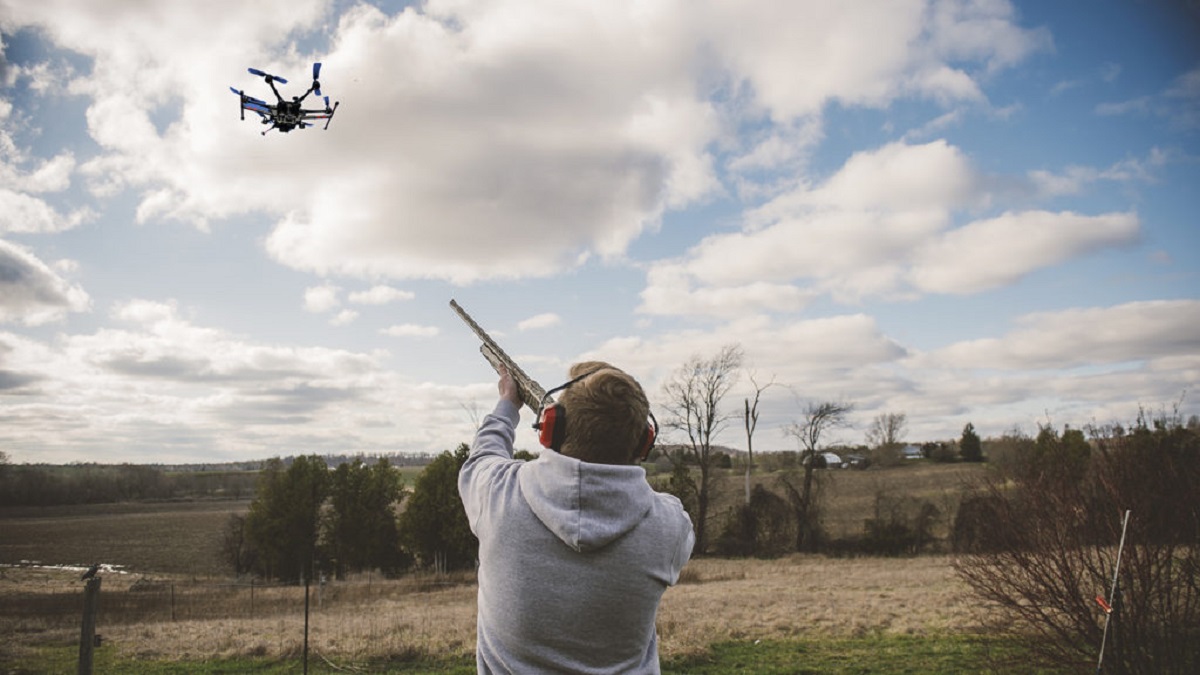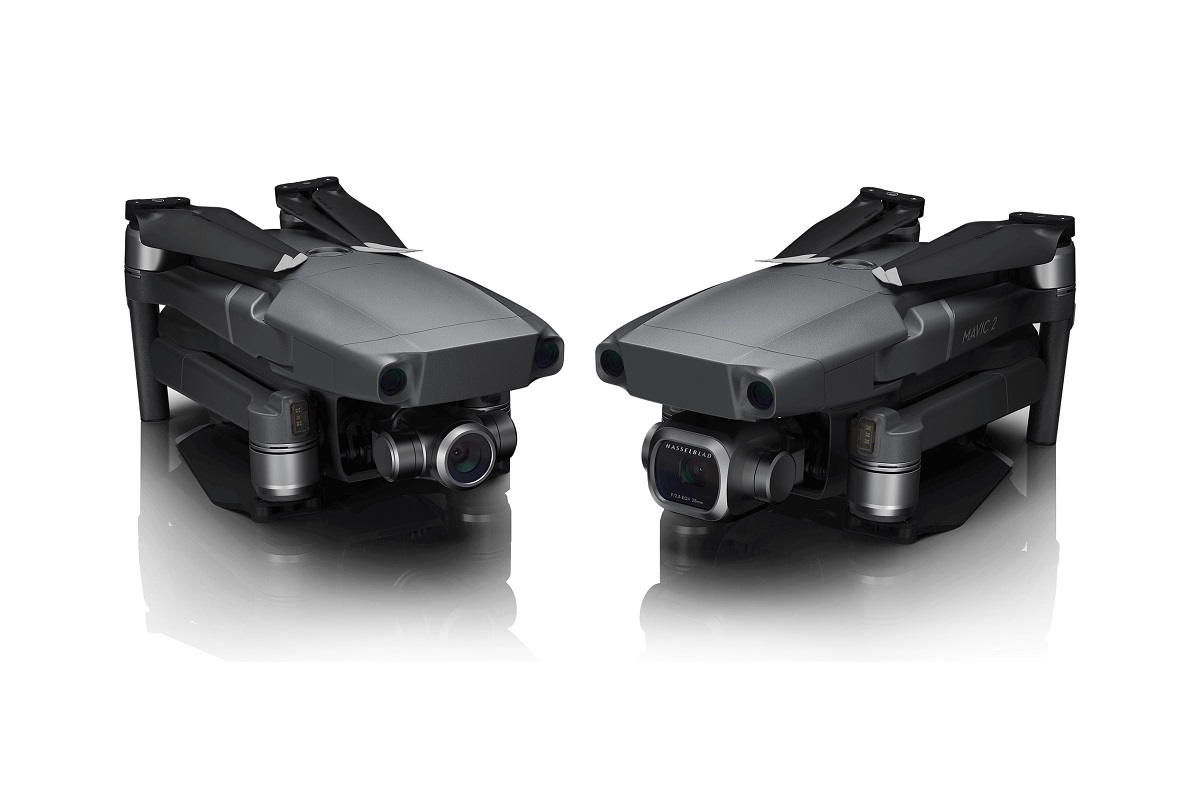Introduction
Drones, the unmanned aerial vehicles, have become increasingly popular in recent years. Whether being used for aerial photography, package delivery, or even military operations, drones have revolutionized many industries. However, with their rise in popularity also comes concerns regarding their misuse and potential threats. This has led to the need for effective methods to bring down a drone in various situations.
In this article, we will explore several methods that can be employed to bring down a drone. From physical interception to advanced technology, these methods offer potential solutions to deal with rogue or unauthorized drones. It is important to note that the use of these methods must comply with legal regulations and be implemented by authorized personnel for security and safety purposes.
Each method discussed will outline the underlying principles and techniques used to effectively bring down a drone. Keep in mind that the best approach may vary based on factors such as the type of drone, its capabilities, and the specific scenario in which it needs to be addressed.
Whether you are concerned about drones trespassing on your property, public safety, or national security, understanding the available methods to bring down a drone can help you make informed decisions and take appropriate actions when necessary.
Method 1: Physical Interception
Physical interception involves using physical means to bring down a drone. This method is particularly useful when dealing with low-flying drones in close proximity. It relies on various tools and techniques designed to physically disable or immobilize the drone.
One commonly used tool for physical interception is a drone-hunting drone. These specialized drones are equipped with nets or other capturing mechanisms. They are deployed to intercept and capture the target drone by entangling it in the net or using other means to disable its propellers.
Another approach to physical interception is the use of trained birds of prey. Birds such as eagles or falcons can be trained to identify drones as prey and capture them mid-air. These birds have sharp talons and a natural instinct for hunting, making them effective at neutralizing smaller drones.
In some cases, anti-drone systems employ physical means to intercept drones. These systems may use radio frequency jammers to disable the drone’s remote control signal, causing it to lose control and fall to the ground.
While physical interception methods can be effective, they typically require trained personnel or specialized equipment. Additionally, they may not be suitable for high-altitude or long-range drones. Therefore, it is essential to evaluate the specific capabilities and limitations of these methods before implementing them.
Physical interception methods provide a tangible solution for bringing down drones in close proximity. However, their successful implementation relies on factors such as the speed and maneuverability of the target drone, the skill of the operator or trainer, and the availability of suitable equipment or trained animals.
Method 2: Signal Jamming
Signal jamming is a popular method used to bring down drones by disrupting their communication systems. Drones rely on various signals, such as radio frequencies and GPS, to receive commands from their operators or navigate autonomously. By jamming these signals, the drone’s ability to receive commands or maintain its flight path can be compromised.
There are different types of signal jammers that can be used to interfere with drone communication. One common type is a radio frequency (RF) jammer. These jammers transmit powerful signals on the same frequency bands as the drone’s control signals, effectively overpowering and disrupting the communication between the drone and its operator. As a result, the drone may lose control or fail-safe behavior may be triggered, causing it to land or return to its starting point.
GPS jamming is another technique used to bring down drones. By broadcasting a strong and fake GPS signal, the drone’s navigation system is misled, causing it to lose track of its position or receive erroneous location information. This can result in the drone losing its way, becoming disoriented, or triggering programmed failsafe measures.
It is important to note that the use of signal jammers may be subject to legal restrictions in some jurisdictions. As signal jamming can interfere with legitimate communication systems, such as those used by emergency services or other authorized entities, it is crucial to ensure compliance with appropriate laws and regulations.
Signal jamming can be an effective method to neutralize drones, as it directly targets the crucial communication systems that drones rely on for their operation. It is a versatile method that can be used in various scenarios and is relatively easy to implement with the right equipment.
However, it is worth considering that advanced drones may have built-in countermeasures to combat signal jamming, such as frequency hopping or encryption. Therefore, it is necessary to evaluate the capabilities of the drone and apply appropriate jamming techniques accordingly.
Method 3: Drone Hacking
Drone hacking involves taking control or manipulating the drone’s software and systems to bring it down or render it inoperable. This method exploits vulnerabilities in the drone’s communication protocols, firmware, or other components to gain unauthorized access.
One approach to drone hacking is intercepting the drone’s wireless communication and injecting malicious commands. By intercepting and modifying the signals sent between the drone and its controller, hackers can manipulate the drone’s flight path, disable critical systems, or even trigger a forced landing.
Another method of drone hacking is exploiting vulnerabilities in the drone’s firmware or software. By accessing the drone’s internal programming, hackers can modify the settings or insert malicious code that disrupts its normal operation. This could lead to crashes, system failures, or unexpected behavior that renders the drone uncontrollable.
It is important to note that drone hacking should only be conducted by authorized individuals or organizations for legitimate purposes, such as security testing or law enforcement actions. Unauthorized or malicious hacking of drones is illegal and can have severe consequences.
Drone manufacturers continuously strive to improve the security of their systems to prevent unauthorized access. Therefore, the effectiveness of drone hacking may depend on the specific model, firmware updates, or possible countermeasures in place.
Implementing drone hacking techniques requires specialized knowledge in software and network security. It is also crucial to stay updated with the latest vulnerabilities and exploit techniques to successfully exploit the targeted drones.
While drone hacking can be a powerful method to bring down drones, it relies on technical expertise and understanding of the drone’s systems and vulnerabilities. As technology advances, so too do the countermeasures used by drone manufacturers to protect their systems from unauthorized access.
Method 4: Laser Systems
Laser systems have emerged as a promising method to bring down drones by targeting their sensors or disabling their essential components. By directing a high-powered laser beam at the drone, its optical sensors, navigation systems, or even propellers can be damaged or disrupted.
Anti-drone laser systems work by emitting concentrated beams of light that are capable of destroying or disabling the drone’s critical components. These laser systems can be mounted on stationary platforms, such as rooftops or vehicles, or integrated into mobile anti-drone systems.
One method of utilizing lasers to disable drones is through the thermal effect. By focusing a high-intensity laser beam on the drone’s surface, the intense heat generated can melt or burn essential components, leading to the drone losing control or crashing. This method is particularly effective against lightweight drones with sensitive electronic systems.
Another approach is disrupting the drone’s sensors by illuminating them with high-intensity laser beams. This can distort or overload the sensors, making it difficult for the drone to accurately detect and navigate its surroundings. Additionally, lasers with specific wavelengths can interfere with the drone’s optical systems, such as cameras or infrared sensors, impairing their functionality.
It is important to note that the use of laser systems for countering drones may be subject to legal restrictions in some jurisdictions. High-powered lasers can pose risks to human safety and can also interfere with other aircraft or systems. Therefore, proper authorization and adherence to regulations are essential.
When deploying laser systems against drones, factors such as the power and range of the laser, the drone’s altitude and speed, and environmental conditions need to be considered for effective operation. Additionally, operator training and safety protocols are crucial to ensure responsible and safe use of laser systems.
While laser systems can be effective in bringing down drones, they do have limitations. Advanced drones with durable materials or protected components may be more resistant to laser damage. Additionally, laser systems may struggle to effectively target and disable drones that are flying at high altitudes or at significant distances.
Method 5: GPS Spoofing
GPS spoofing is a technique used to deceive a drone’s GPS receiver, leading it to believe it is in a different location or altering its perceived flight path. By broadcasting false GPS signals, the drone can be manipulated into deviating from its intended course or even forced to land.
To conduct GPS spoofing, a spoofer device is used to generate counterfeit GPS signals that overpower the authentic GPS signals received by the drone. The spoofer device mimics the signals emitted by GPS satellites and transmits manipulated location data to mislead the drone’s navigation system.
By spoofing the drone’s GPS, an attacker can trick it into flying towards a specific location or initiate a programmed failsafe behavior. This can cause the drone to lose control, land in an unintended area, or prevent it from reaching its designated target.
GPS spoofing can be a particularly effective method against drones that rely heavily on GPS for navigation, especially those operating in autonomous or semi-autonomous modes. However, it is important to note that GPS spoofing may have legal implications and should only be conducted by authorized personnel in accordance with applicable laws and regulations.
It is worth mentioning that advancements in drone technology have made it harder to perform successful GPS spoofing. Manufacturers are implementing countermeasures to detect and mitigate GPS spoofing attacks, such as monitoring the consistency of multiple positioning systems or employing encryption techniques.
Successful GPS spoofing attacks require knowledge of the targeted drone’s GPS system and the ability to accurately manipulate the GPS signals. Furthermore, environmental factors and the distance between the spoofer device and the drone can affect the effectiveness of the spoofing technique.
While GPS spoofing can be a potent method to bring down drones or disrupt their operations, it is an area of concern due to potential misuse. To prevent unauthorized access or manipulation of GPS signals, ongoing research and development for more secure and resilient GPS systems are vital.
Method 6: Net Guns and Capture Drones
Net guns and capture drones are specialized tools and systems designed to physically capture and immobilize drones in mid-air. These methods offer an effective and non-destructive approach to bring down drones, particularly in urban areas or situations where collateral damage needs to be minimized.
Net guns are handheld or mounted devices that shoot a specially designed net at the target drone. The net is equipped with weights or cords to entangle the drone’s propellers and obstruct its flight. As a result, the drone becomes disabled and safely descends to the ground or remains suspended until it can be safely retrieved.
Capture drones, on the other hand, are specifically designed drones equipped with nets or other capturing mechanisms. These drones are deployed to intercept and capture the target drone by entangling it in the net or using other means to disable its propellers. Once captured, the capture drone can either lower itself and the captured drone to the ground or return to a safe location for retrieval.
Net guns and capture drones offer several advantages. They provide a non-destructive solution that allows for the recovery of the captured drone, facilitating forensic analysis or investigation if needed. Additionally, they can be used in areas where other methods, such as signal jamming or laser systems, may pose risks or have limitations.
However, the successful implementation of net guns and capture drones requires skilled operators who can accurately target and deploy the capturing mechanisms. Furthermore, these methods may not be suitable for drones flying at high altitudes or with advanced avoidance systems that can evade capture.
It is important to note that the use of net guns and capture drones must comply with legal regulations and guidelines. Unauthorized capturing of drones may be illegal and could result in legal consequences.
Net guns and capture drones are valuable tools for safely and effectively bringing down drones without causing significant damage. Their versatility and non-destructive nature make them viable options in situations where other methods may not be appropriate or feasible.
Method 7: Birds of Prey
Inspired by nature, birds of prey have been trained to intercept and capture drones in mid-air, providing a unique and natural method to bring down these unmanned aerial vehicles.
Birds such as eagles and falcons possess natural hunting instincts and exceptional aerial abilities, making them well-suited for this task. Through specialized training, these birds can be taught to perceive drones as prey and effectively intercept and capture them in flight.
When a trained bird spots a drone in the air, it will swiftly close in on its target, using its talons to grab or immobilize the drone. The bird’s sharp, strong claws enable it to securely grasp the drone and disrupt its flight, ultimately bringing it down to the ground.
Using birds of prey to neutralize drones offers several advantages. These birds can navigate challenging terrain and access areas that may be difficult for humans or conventional devices to reach. Additionally, their natural hunting behavior and instincts provide a proactive and efficient method of drone interception.
However, employing birds of prey as a method to bring down drones does require extensive training and expertise. It is essential to ensure the safety of both the birds and the handlers during operations. Training programs involve exposing the birds to the presence of drones, teaching them how to identify and approach drones safely, and implementing measures to protect the birds from potential harm caused by the drone’s rotors or other components.
Another consideration is the size and weight of the drone. Birds of prey are typically trained to capture smaller drones, so larger or heavier drones may pose challenges for them. It is necessary to assess the capabilities and limitations of the birds as well as the type of drone being targeted.
Although using birds of prey to bring down drones presents a unique and environmentally friendly approach, it is crucial to adhere to local regulations and animal welfare guidelines. Proper training, handling, and supervision are necessary to ensure the birds are not subjected to unnecessary risks or harm.
Training birds of prey to intercept and capture drones offers an innovative and natural method for addressing drone threats. The combination of the birds’ instinctual abilities and careful training techniques can provide an effective solution in appropriate situations.
Method 8: Anti-Drone Drones
In response to the increasing drone presence, the development of anti-drone drones has emerged as an innovative method to counter unauthorized or rogue drones. These specialized drones are specifically designed to detect, track, and neutralize target drones by employing a range of techniques.
Anti-drone drones are equipped with various countermeasures to disable or bring down unauthorized drones. One common method is the use of a net gun or a capturing mechanism to entangle the target drone’s propellers and render it inoperable. Once captured, the anti-drone drone can safely bring the captured drone to the ground for retrieval or further examination.
Another approach utilized by anti-drone drones is the deployment of radio frequency (RF) jammers. These drones are equipped with RF jamming technology that disrupts the communication systems of the target drone, causing it to lose connectivity with its operator and potentially triggering failsafe mechanisms that lead to a safe landing.
In addition to net guns and RF jammers, anti-drone drones may also utilize lasers to target and disable drones. By directing a high-powered laser beam at the drone’s critical components or sensors, the anti-drone drone can impair its functionality and bring it down.
Anti-drone drones often incorporate advanced sensor technology, including radar and computer vision, to detect and track the target drone. These sensors enable the anti-drone drone to effectively locate and engage the target, providing real-time data to guide its countermeasures.
It is important to note that the use of anti-drone drones may be subject to legal restrictions and guidelines, as they involve potential risks and can interfere with other airspace regulations. Authorization and adherence to appropriate laws are essential to ensure responsible and lawful use.
The effectiveness of anti-drone drones depends on factors such as the capabilities of the targeted drone, the flight performance of the anti-drone drone, and the skill of the operator controlling the countermeasures. Ongoing advancements in technology and continuous research and development in this field aim to improve the effectiveness and efficiency of anti-drone drone systems.
Anti-drone drones provide a flexible and proactive solution for countering unauthorized drones. Their ability to detect, track, and neutralize drones in real-time makes them a valuable tool in protecting sensitive areas, maintaining public safety, and mitigating potential threats posed by drones.
Conclusion
The growing popularity of drones has brought with it concerns about privacy, security, and safety. As a result, various methods have been developed to bring down drones in different situations.
Physical interception methods, such as net guns and capture drones, provide a hands-on approach to capture and disable drones in close proximity. These methods offer non-destructive options and minimize collateral damage.
Signal jamming techniques disrupt the communication systems of drones, making them lose control or triggering failsafe measures. However, it is important to ensure compliance with legal regulations and avoid interfering with authorized communication systems.
Drone hacking allows unauthorized access to the drone’s software and systems, enabling the manipulation of the drone’s behavior. This method requires technical expertise and must be conducted by authorized individuals for legitimate purposes.
Laser systems can damage the drone’s components or sensors through intense beams of light. However, their effectiveness may vary depending on the drone’s resistance and the environmental conditions.
GPS spoofing deceives the drone’s GPS receiver, manipulating its perceived location or flight path. Proper authorization and adherence to regulations are crucial when applying GPS spoofing techniques.
Using birds of prey allows a natural and effective means of intercepting and capturing drones. However, proper training and consideration of the birds’ safety and legal guidelines are essential.
Anti-drone drones combine various countermeasures, such as net guns, RF jammers, or lasers, to disable and neutralize unauthorized drones. It is important to follow legal restrictions and continuously develop these systems to improve their effectiveness.
In conclusion, the choice of method to bring down a drone depends on various factors, including the situation, the capabilities of the drone, and the legal and ethical considerations. It is crucial to ensure responsible and lawful use of these methods to maintain safety, security, and privacy in the growing drone landscape.

























